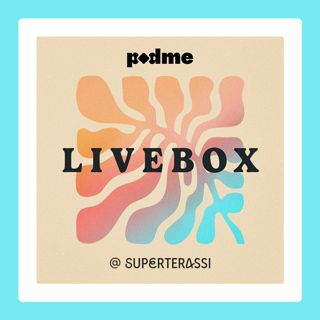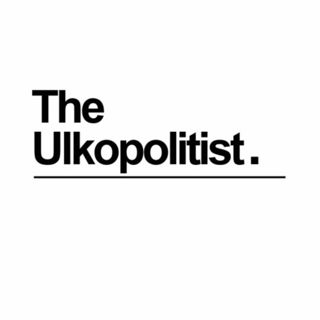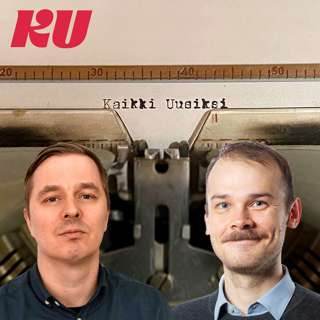
"Fashion's Future: Navigating Uncertainty and Embracing Innovation"
The current state of the fashion industry is marked by uncertainty and challenges, as highlighted in the recent BoF-McKinsey State of Fashion Executive Survey. The industry is expected to face a tumultuous 2025, with only 20% of executives predicting improved consumer sentiment and 39% expecting worse industry conditions[1][4].The fashion industry's revenue growth is expected to stabilize in the low single digits, a continuation of the sluggishness seen in 2024. Consumers, affected by the recent period of high inflation, are increasingly price sensitive, leading to a shift towards value-for-money segments like resale and dupes[1][4].Geographic disparities are also evident, with Asia emerging as a growth hotspot. India, Japan, and Korea are seen as new stars in the APAC region, with 63% of executives viewing mature APAC markets as growth hotspots in 2025[4].In response to these challenges, fashion industry leaders are focusing on reconfiguring supply chains to prioritize nearshoring and manufacturing in geopolitically-aligned countries. Companies are also making efforts to reduce excess inventory and minimize the risk of shortfalls, driven by margin pressures and pressures from governments to reduce emissions and fashion waste[1].The integration of technology into fashion is also gaining traction, with the global smart clothing market expected to reach $5.3 billion by 2024. Brands such as Levi's and Google are exploring innovations like temperature-regulating fabrics, augmented reality capabilities, and interactive designs[5].ANDMORE, a leading apparel market platform, is introducing new initiatives in 2025 focused on education, enhanced buyer resources, and fostering stronger community connections. These initiatives include Market Insiders, New Buyer Meet & Greet, and Taste of Atlanta, designed to share market expertise, foster connection, and encourage exploration around the city[2].In comparison to the previous reporting period, the industry's outlook has become more pessimistic. The 2023 report highlighted the industry's strong performance in 2021 and the first half of 2022, but noted that deteriorating macroeconomic and geopolitical conditions would weigh heavily on the industry in the second half of 2022 and 2023[3].Overall, the fashion industry is navigating a complex and challenging landscape in 2025. To succeed, companies must be agile, innovative, and responsive to shifting consumer behavior and preferences. By prioritizing sustainability, technology, and community connection, fashion industry leaders can position themselves for growth and success in the years ahead.This content was created in partnership and with the help of Artificial Intelligence AI
3 Tammi 3min

Fashion 2025: Navigating Subdued Optimism, Sustainability, and Tech Transformation
The global fashion industry enters 2025 amidst subdued optimism, with economic uncertainty, technology, and shifting consumer priorities top of mind. According to the latest BoF-McKinsey State of Fashion 2025 report, revenue growth is projected to stabilize in the low single digits, marking a shift away from the luxury-led recovery of previous years[1][4].For the first time in over a decade, non-luxury segments are driving profit growth, reflecting consumers' growing preference for value-driven options. However, only 20% of industry leaders expect improved consumer sentiment, citing high inflation, geopolitical tensions, and demographic shifts as key concerns[1][4].Geographically, Asia's role in fashion is diversifying, with China's economic growth slowing and markets like India, Japan, and South Korea stepping into the spotlight[4]. The industry faces entrenched challenges in achieving sustainability, complicated by fragmentation across its value chain, consumer hesitation to pay a premium for sustainable goods, and sluggish regulatory response[1].Key strategies for brands include consolidating supplier relationships to drive critical mass, partnering with traceability providers for granular emissions data, and prioritizing cost-neutral sustainability measures such as energy efficiency and waste reduction. Brands like H&M, Inditex, and PVH are piloting these approaches through long-term commitments to sustainable materials, shared financing initiatives, and supplier collaborations[1].In response to current challenges, fashion industry leaders are focusing on education, enhanced buyer resources, and fostering stronger community connections. ANDMORE's Apparel Markets, for example, are launching new initiatives in 2025, including Market Insiders, New Buyer Meet & Greet, and Taste of Atlanta, designed to share market expertise, foster connection, and encourage exploration[2].Technology will be critical for fashion businesses in 2025, with success hinging on collaborating with partners, using best-in-class technology tools, implementing actionable strategies, and continually adjusting these efforts to align with the changing priorities of the fashion industry[5].Compared to the previous reporting period, the industry's growth trajectory has shifted decisively from the post-pandemic boom to low single-digit expansion, marking what analysts describe as a "structural deceleration"[1][3]. The luxury segment, which previously drove growth, is expected to see non-luxury players drive the entirety of economic profit growth for the first time since 2010[1].In conclusion, the fashion industry in 2025 is characterized by subdued optimism, shifting consumer priorities, and a focus on sustainability and technology. Industry leaders are responding to current challenges by prioritizing education, community connections, and cost-neutral sustainability measures, while also leveraging technology to drive success.This content was created in partnership and with the help of Artificial Intelligence AI
1 Tammi 3min

Fashion Industry Faces Slow Growth, Sustainability Demands in Uncertain Economic Climate
The current state of the fashion industry is marked by uncertainty and challenges, as highlighted in the latest reports from the Business of Fashion and McKinsey. The industry is expected to achieve year-on-year retail sales growth of between 2 percent and 4 percent in 2024, a slower pace compared to previous years[1][5].Consumer confidence remains fragile, particularly in key markets such as the US, Europe, and China, due to ongoing economic and geopolitical challenges. The climate crisis has also become a significant pressure point, with extreme weather events in 2023 emphasizing the need for the industry to build resilience into its supply chains and reduce emissions[1].In response to these challenges, fashion companies are focusing on growing sales through new pricing and promotion strategies rather than volume increases. The industry is expected to bear the impact of fluctuations in demand, leading to a "bullwhip effect" in supply chains, causing factory underutilization, layoffs, and delayed infrastructure investments[1].The luxury segment is expected to generate the biggest share of economic profit, with global growth forecast at 3 to 5 percent, compared to 5 to 7 percent in 2023. However, even within luxury, companies will face challenges due to the tough economic environment[5].Regional differences are pronounced, with European growth expected to slow to 1 to 3 percent, while US growth is expected to pick up after a relatively weak 2023. China is expected to see growth of 4 to 6 percent, a slight uptick from the end of 2023 but slow on a historical basis[5].To navigate these challenges, fashion brands are investing in developing more transparent and collaborative relationships with their suppliers. Vertical integration has emerged as a vital strategy for garment manufacturers, enhancing control over production and reducing lead times[3].Sustainability demands are also becoming standard business concerns, with the need for rapid production and transparency intensifying. The industry is expected to see significant technological advancements, with robots potentially replacing traditional labor roles and data guiding business decisions[3].In conclusion, the fashion industry is facing a challenging period, with slow growth, fragile consumer confidence, and significant environmental pressures. However, by focusing on sustainability, vertical integration, and collaborative supply chain relationships, industry leaders are responding to these challenges and positioning themselves for success in the year ahead.This content was created in partnership and with the help of Artificial Intelligence AI
29 Joulu 20242min

"Fashion's Resilience: Navigating Economic Uncertainty and Embracing Sustainability"
The fashion industry is navigating a challenging era marked by economic uncertainty, geopolitical tensions, and the pressing need for sustainability. According to the BoF-McKinsey State of Fashion 2024 report, the industry is expected to achieve year-on-year retail sales growth of between 2 percent and 4 percent in 2024, a modest increase compared to previous years[1].Consumer confidence remains fragile, with different markets facing unique challenges. In the US, Europe, and China, fashion leaders are anticipating further headwinds, with 85 percent of executives predicting inflation will continue to challenge the market[3]. The climate crisis has also become a critical concern, with extreme weather events in 2023 highlighting the need for the fashion industry to build resilience into its supply chains and reduce emissions[1].Despite these challenges, the industry is seeing a surge in collaborations and partnerships. Notable examples include Levi's sold-out capsule with Kiko Kostadinov, the collection from Wolverine brands Merrell and Sweaty Betty, and the partnership between Authentic Brands Group properties Reebok and Juicy Couture[2]. These collaborations are helping brands to innovate, differentiate their offerings, and tap into new market segments.Vertical integration is emerging as a vital strategy for garment manufacturers, enabling them to control more stages of the supply chain, reduce lead times, and enhance efficiency[4]. Private label partnerships are also becoming increasingly important, allowing fashion brands to leverage the expertise and resources of their partners to develop exclusive product lines and expand their reach[5].In terms of consumer behavior, there is a growing demand for sustainability, with 58 percent of executives believing that the energy crisis will weaken the fashion market[3]. The industry is responding to this demand by incorporating sustainable practices into their business strategies, with a focus on reducing waste, using eco-friendly materials, and promoting transparency.Compared to the previous reporting period, the industry is facing a more uncertain and challenging environment. The global economic outlook is unsettled, and the industry is expected to contract between 5 percent and 7 percent in the second half of 2022, with slight improvements in 2023[3]. However, the luxury segment is expected to show more resilience, with sales projected to grow 5 percent to 10 percent in 2023[3].In conclusion, the fashion industry is navigating a complex and challenging landscape, marked by economic uncertainty, geopolitical tensions, and the need for sustainability. Despite these challenges, the industry is seeing a surge in collaborations and partnerships, and is responding to the growing demand for sustainability by incorporating eco-friendly practices into their business strategies. By leveraging private label partnerships, vertical integration, and sustainable practices, fashion brands can position themselves for success in this dynamic and rapidly evolving industry.This content was created in partnership and with the help of Artificial Intelligence AI
27 Joulu 20243min

Navigating Fashion's Uncertain Future: Strategies for Success in 2024
The current state of the fashion industry is characterized by uncertainty and challenges, with executives anticipating further headwinds in 2024. According to the BoF-McKinsey State of Fashion 2024 Executive Survey, the word most often mentioned by executives was "uncertainty," reflecting concerns about consumer confidence, economic conditions, and the climate crisis[1].In terms of market movements, the fashion industry is predicted to achieve year-on-year retail sales growth of between 2 percent and 4 percent in 2024, a slower pace than in previous years[1]. This is partly due to economic challenges, including inflation and geopolitical tensions, which are expected to continue to weigh heavily on consumer confidence.Despite these challenges, collaborations and partnerships remain a key strategy for fashion brands. Recent deals include Levi's sold-out capsule with Kiko Kostadinov, a collection from Wolverine brands Merrell and Sweaty Betty, and a pair-up between Authentic Brands Group properties Reebok and Juicy Couture[2]. These collaborations aim to create new and covetable products while maintaining separate brand identities.Emerging competitors and new product launches are also shaping the industry. For example, Mango and Victoria Beckham released a capsule collection in April as part of Mango's 40th anniversary celebration, highlighting the push towards more high-end capsules[2].Regulatory changes and significant market disruptions are also on the horizon. The climate crisis is becoming increasingly visible, with extreme weather events in 2023 leaving the fashion value chain vulnerable. As a result, leading companies are likely to bolster their resilience to climate impacts in 2024[1].In terms of shifts in consumer behavior, sustainability is becoming a core business strategy, with waste being transformed into raw materials and data guiding production[4]. Consumers are increasingly environmentally conscious, driving demand for eco-friendly products.Supply chain developments are also underway, with end-to-end vertical integration emerging as a vital strategy for garment manufacturers. This involves factory owners expanding into textile production, knitting, and dyeing to meet increasingly crunched buyer timelines[4].Fashion industry leaders are responding to current challenges by forming private label partnerships, which can unlock new opportunities for growth, innovation, and market penetration[5]. Identifying strategic partners is critical, as they can provide access to new technologies, expertise, and markets.Compared to the previous reporting period, the industry is facing a more challenging environment, with slower growth predicted and increased uncertainty. However, by leveraging collaborations, sustainability, and supply chain innovations, fashion brands can navigate these challenges and remain competitive.In conclusion, the fashion industry is navigating a complex and challenging landscape in 2024, with uncertainty and economic challenges weighing heavily on consumer confidence. However, by embracing collaborations, sustainability, and supply chain innovations, fashion brands can respond to these challenges and remain competitive in a rapidly evolving market.This content was created in partnership and with the help of Artificial Intelligence AI
23 Joulu 20243min

Fashion's Uncertain Future: Navigating Climate Risks and Collaborative Strategies
The current state of the fashion industry is characterized by uncertainty and challenges, with various factors influencing its trajectory. According to the BoF-McKinsey State of Fashion 2024 report, the industry is expected to achieve year-on-year retail sales growth of between 2 percent and 4 percent in 2024, despite ongoing economic and geopolitical challenges[1].One of the significant pressures facing the industry is the climate crisis, which has become increasingly visible due to extreme weather events in 2023. Fashion leaders are recognizing the need to build resilience into their supply chains and reduce emissions to mitigate climate risks[1].In terms of market movements, collaborations have been a significant trend in 2024, with notable partnerships such as Levi's with Kiko Kostadinov, Mango with Victoria Beckham, and Gap with Palace[2]. These collaborations aim to combine the best aesthetics of each brand while maintaining separate identities and creating something new and desirable.The industry is also witnessing a shift towards vertical integration, with garment manufacturers expanding into textile production, knitting, and dyeing to meet increasingly tight buyer timelines. This strategy enhances control over production, reduces lead times, and enables agility in responding to market changes and customer demands[4].Private label partnerships are another strategic approach being adopted by fashion brands to expand their reach and influence. These collaborations can unlock new opportunities for growth, innovation, and market penetration by co-creating exclusive product lines and leveraging the expertise and resources of private label partners[5].In comparison to the previous reporting period, the industry's growth prospects have become more cautious. The BoF-McKinsey State of Fashion 2023 report predicted global fashion sales growth of 5 percent to 10 percent for luxury and negative 2 percent to positive 3 percent for the rest of the industry in 2023[3]. However, the current outlook is more subdued, with a focus on navigating challenges and building resilience.Consumer behavior is also shifting, with a growing emphasis on sustainability and environmental consciousness. Fashion brands are responding to these changes by incorporating eco-friendly practices and materials into their products and supply chains.In conclusion, the fashion industry is navigating a challenging era, with uncertainty and climate risks being key concerns. However, industry leaders are responding by adopting strategic approaches such as collaborations, vertical integration, and private label partnerships to drive growth and innovation. By focusing on sustainability and agility, fashion brands can build resilience and thrive in a rapidly changing landscape.This content was created in partnership and with the help of Artificial Intelligence AI
22 Joulu 20243min

Fashion's Uncertain Future: Navigating Sustainability, Consolidation, and Shifting Trends in 2024
The current state of the fashion industry is marked by uncertainty and challenges, as highlighted in the latest reports from the Business of Fashion and McKinsey. The industry is expected to achieve year-on-year retail sales growth of between 2 percent and 4 percent in 2024, a slower pace compared to previous years[1][5].One of the major pressures facing the industry is the climate crisis. Extreme weather events in 2023 have underscored the need for fashion companies to build resilience into their supply chains and reduce emissions. This is not just an environmental imperative but also a business necessity, as climate risks could put at risk an estimated $65 billion of apparel exports by 2030[1].Consumer confidence remains fragile, with differing headwinds in key markets such as the US, Europe, and China. In the US, non-luxury sector growth is forecast to be between 0 and 2 percent, while in Europe, the market is expected to expand by just 1 to 3 percent. China is expected to see growth of 4 to 6 percent, which is a slight uptick but slow on a historical basis[5].The luxury segment is expected to generate the biggest share of economic profit, with global growth forecast at 3 to 5 percent. However, even luxury companies will be challenged by the tough economic environment, as consumers rein in spending after a post-pandemic surge[5].In response to these challenges, fashion industry leaders are focusing on sustainability, vertical integration, and consolidation. The rise of vertical integration is a key trend, with garment manufacturers expanding into textile production, knitting, and dyeing to meet increasingly crunched buyer timelines and enhance control over production[3].Consolidation is also a major theme, with the survival of the fittest becoming a reality in the industry. Companies are looking to combine careful cost control with strategic investments in skills growth to navigate the challenging economic landscape[3].The fast fashion market, despite its environmental and social challenges, is projected to reach $197 billion by 2028, driven by innovations in supply chain management and the demand for high fashion at low cost[4].In conclusion, the fashion industry is facing a complex and challenging environment in 2024. While growth is expected, it will be slower and more uneven than in previous years. Industry leaders are responding by focusing on sustainability, vertical integration, and consolidation, and by adapting to shifts in consumer behavior and supply chain developments. The industry must navigate these challenges to ensure long-term success and resilience.This content was created in partnership and with the help of Artificial Intelligence AI
18 Joulu 20243min

Navigating Fashion's Evolving Landscape: Resilience, Sustainability, and Adapting to Change
The current state of the fashion industry is marked by uncertainty and challenges, with various factors influencing its trajectory. According to the BoF-McKinsey State of Fashion 2024 report, the industry is expected to achieve year-on-year retail sales growth of between 2 percent and 4 percent in 2024, a slower pace compared to previous years[1].One of the significant pressures facing the industry is the climate crisis. Extreme weather events in 2023 have highlighted the need for resilience and sustainability in supply chains. Leading companies are likely to bolster their efforts in this area, with a focus on reducing emissions and integrating sustainable materials and processes[1].In terms of market movements, the global economic outlook remains unsettled, with differing headwinds in key markets such as the US, Europe, and China. This requires suppliers, brands, and retailers to enhance contingency planning and adapt to changing market conditions[1].Recent partnerships and collaborations are shaping the future of the fashion industry. For instance, close collaborations with textile manufacturers are crucial for successful sample development, enabling access to the latest developments in fabric technology and sustainable materials[2]. Co-creation initiatives with influential fashion brands are also pivotal, fostering innovation, enhancing market adaptability, and promoting sustainability[2].Emerging trends in the fashion industry include the rise of vertical integration, with garment manufacturers expanding into textile production, knitting, and dyeing to meet increasingly crunched buyer timelines[4]. Consolidation is also a key trend, with businesses needing to navigate complex geopolitical landscapes and respond to changing trade policies and labor laws[4].In terms of consumer behavior, there is a growing demand for sustainability and transparency. Consumers are increasingly eco-conscious, and companies are responding by integrating sustainable materials and processes into their products[2][4].Regulatory changes and market disruptions are also influencing the industry. For example, the World Bank's 2024 projections indicate the worst global economic growth in three decades, emphasizing the need for agile and tech-savvy business responses[4].Industry leaders are responding to current challenges by focusing on sustainability, resilience, and innovation. For instance, Balenciaga's collaboration with Manchester United and Off-White's partnership with the Golden State Warriors demonstrate the potential for unique crossovers that resonate with both fans and fashion-forward consumers[5].In comparison to the previous reporting period, the industry's growth has slowed down, and the outlook is more cautious. However, there are opportunities for businesses that can adapt to changing market conditions and prioritize sustainability and innovation[1][3].Overall, the fashion industry is navigating a challenging era, with a focus on resilience, sustainability, and innovation. By understanding the current state of the industry and responding to emerging trends and challenges, businesses can position themselves for success in the years ahead.This content was created in partnership and with the help of Artificial Intelligence AI
13 Joulu 20243min





















